Strasbourg has long been one of my favorite short-range travel destinations outside of Stuttgart. It's just a little over an hour by train, and so the journey is very reasonable for a day trip or even a weekend. But what I love about Strasbourg the most is that it's just over the French-German border, making it a fantastic blend of culture and cuisine from both countries. Though I've been to Strasbourg several times, I'd never been to the Christmas market held there every year and said to be one of the best in Europe. And so when my mother decided to make the overseas flight to see us for Christmas, I knew that it would be a perfect opportunity to visit Les Marchés de Noël de Strasbourg.
How to Get There and Around
Getting to Strasbourg from Stuttgart is very easy. Of course you can drive the hour-long distance between here and there on the Autobahn, however, I prefer the comfort and relaxation that I get from traveling by train. The French fast trains or TGV run several times a day between Munich and Paris, with stops at Stuttgart and Strasbourg. We took the 8:55 from Stuttgart on Wednesday morning, and other than a short delay due to a problem with the train's electronics (according to the conductor), we arrived in the expected one-hour-and-twenty-five minute time frame.
Strasbourg is a very walkable city. It's just four blocks from the main station to the city center, called the Grand Île. As you can guess by the name, the Grand Île is an island surrounded by the river Ill, and though the many winding streets make it appear big, I estimate that it takes us no more than 15 or 20 minutes to go from one end of the island to the other.
On this occasion, however, we decided to try out Strasbourg's tram system due to my mother's bad knee and Leo's recent problems with his hind legs. Though I'd never taken it before, I found the system relatively simple to navigate. We purchased some tram tickets for the Marché de Noël at 1,70€ for a single journey, and hopped on the A or D line from the main station to the Langstross Grand'Rue stop in the center of the Grand Île. From there we had easy access to our hotel and to the main markets in the city center.
The Markets
Unlike the Stuttgart Weihnachtsmarkt, which although quite large is also relatively compact, the Strasbourg "market" is actually several markets spread out across the city. We prioritized the markets that we wanted to see first and spent our time leisurely strolling from one to the next. Here are the different ones that we saw:
- Place de la Cathédrale -- This market in the shadow of the Strasbourg Cathedral was beautifully placed, but also probably the most touristy one of the lot. They had all the usual food and beverage stalls, plus the decorated goods stalls with the usual wooden ornaments, painted houses, and silver jewelry.
- Place Gutenberg & Place du Temple-Neuf -- An extension of the market around the Cathedral, we walked through these two smaller markets on the way to Place Kléber. Again, they had the usual traditional, slightly touristy goods.
- Place Kléber -- I found this square to be extremely beautiful with its grand Christmas tree. There were a few stalls around the tree mostly selling mulled wine and advertising the local Lions Club and other aid organizations, but the main market here featured antiques, books, clothing, and kitchen utensils. I imagine the goods must be quite desirable for Christmas presents, though I found it a bit odd and more like some of the weekend flea markets that I've seen around France and Spain.
- Place d'Austerlitz & Place du Corbeau* -- This was definitely my favorite market of the ones we visited. These stalls mostly featured regional foods, including wine, beer, cookies, and foie gras. I had a great time trying all the different treats, and we walked away with not only several bags of cookies, but also some lovely duck sausages to enjoy on Christmas Eve.
- Place de la gare -- Just in front of the train station you'll find a small number for mostly food stalls as well as a few stalls selling Christmas ornaments, cookies, and other goods. It's a nice introduction to the city if you plan to just visit for the day.
- Place Broglie* -- This market was by far the largest of the bunch and reminded me more of Stuttgart's market in front of the Rathaus. There were three or four long rows of stands with food, mulled wine, ornaments, and traditional Christmas market goods like jewelry, soap, carvings, and other crafts. It was definitely one of my top three favorites.
- Place Benjamin-Zix & Place des meuniers* -- These markets were in the lovely Petite France district on the tip of the island. They were also in my top three because of both the beautiful location of the markets and their selection of goods, which ranged from traditional Christmas goods to local beer, jams, and honeys.
* denotes my favorite markets and the ones I recommend.

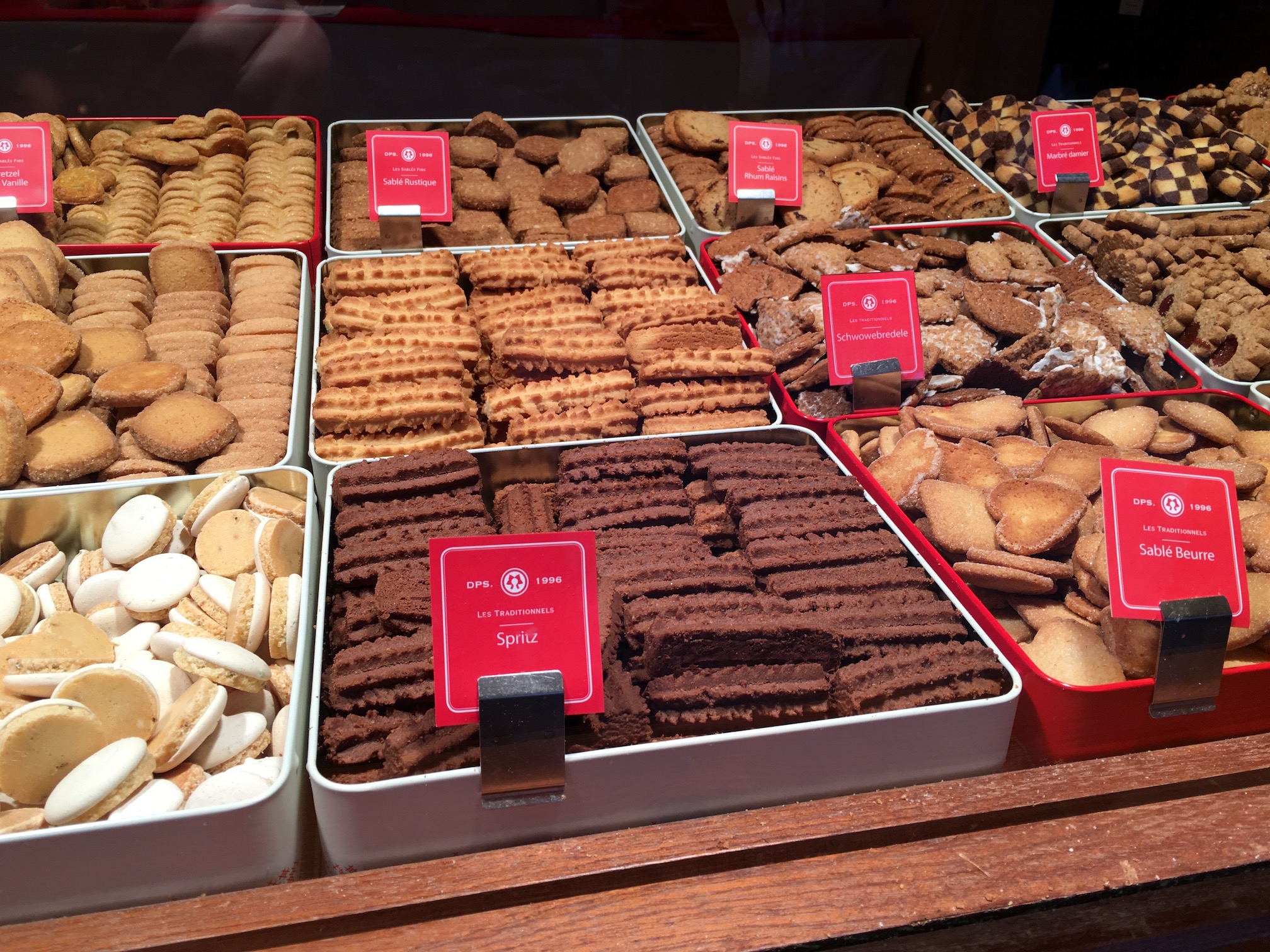

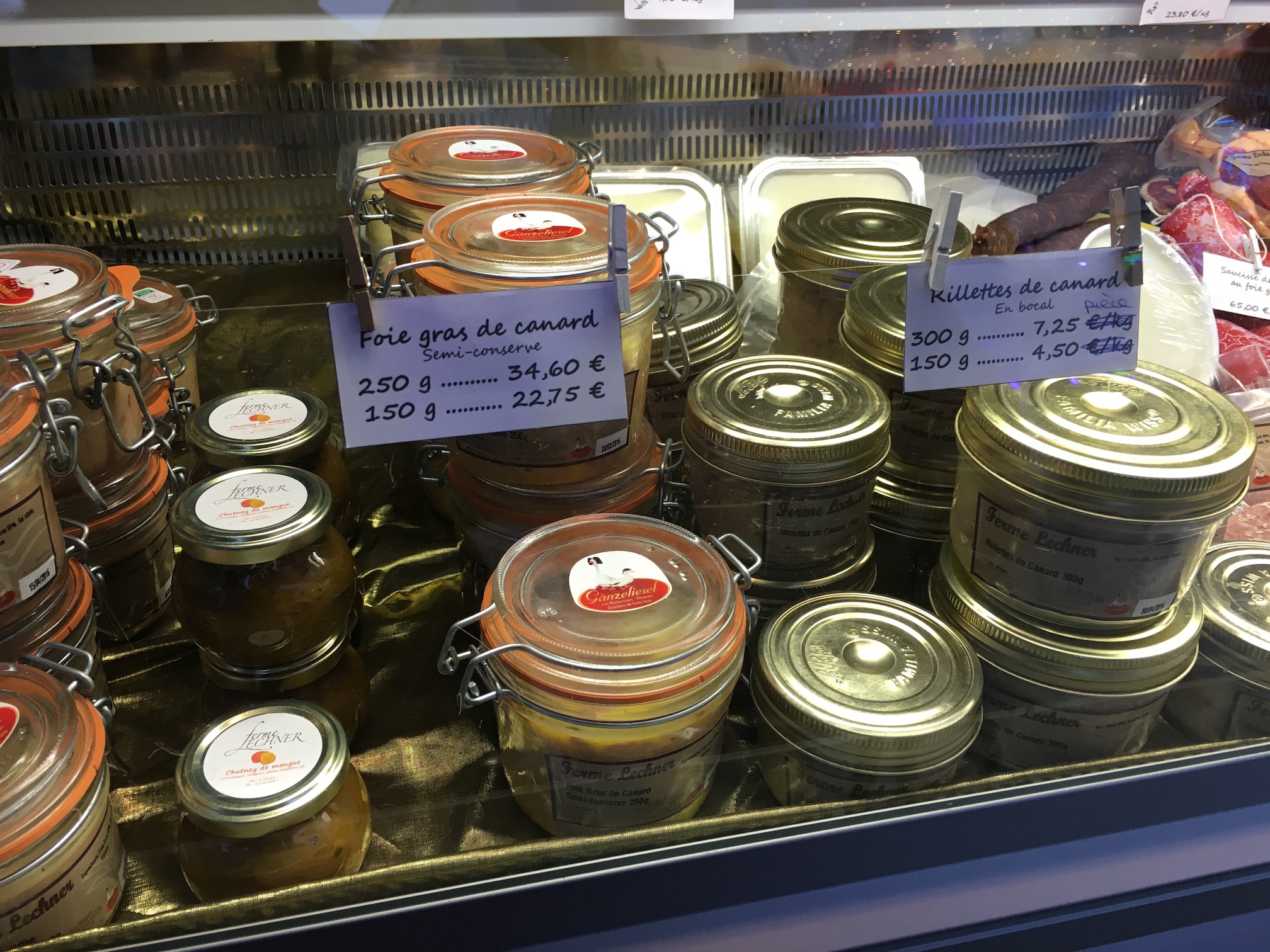
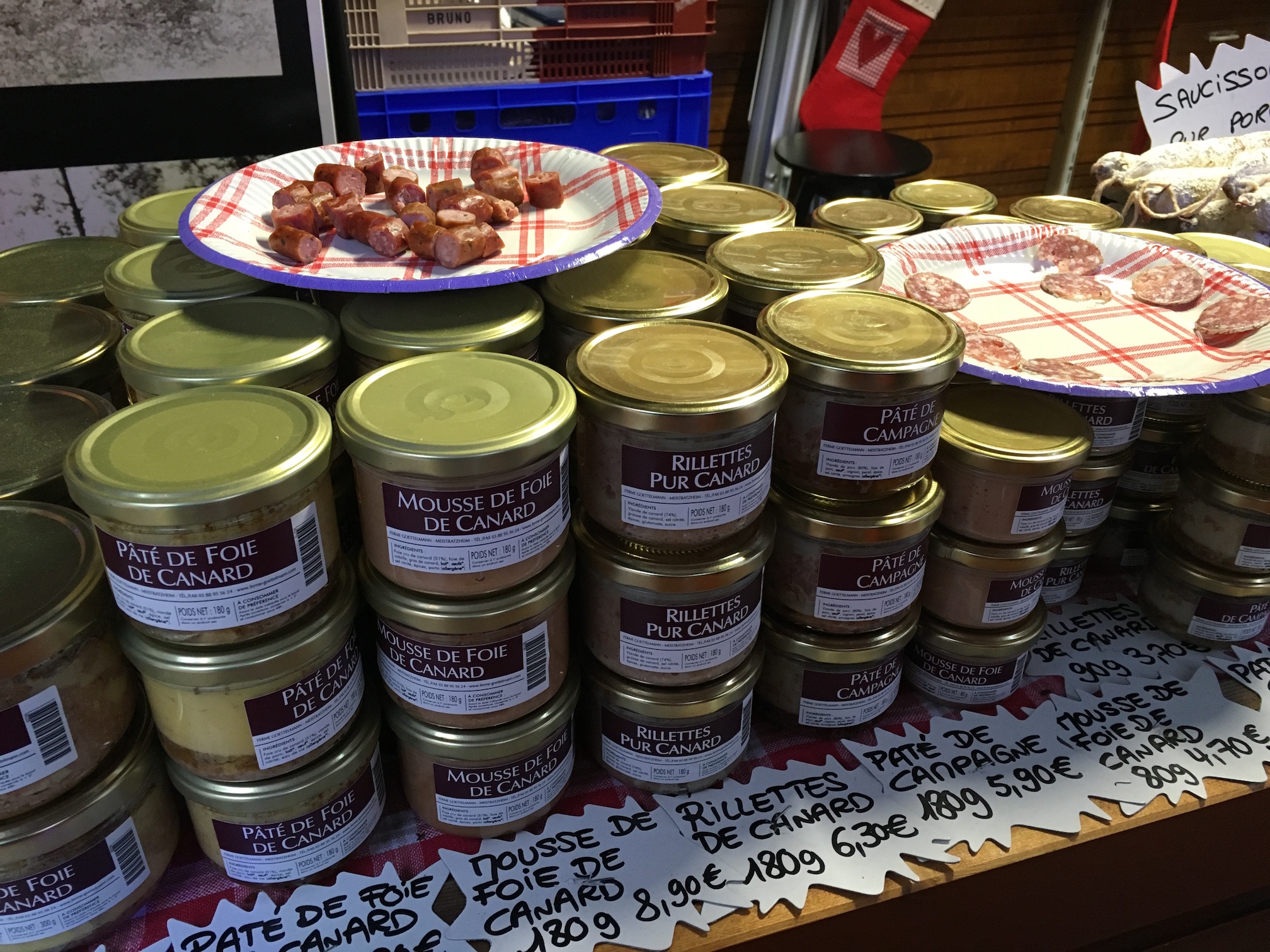

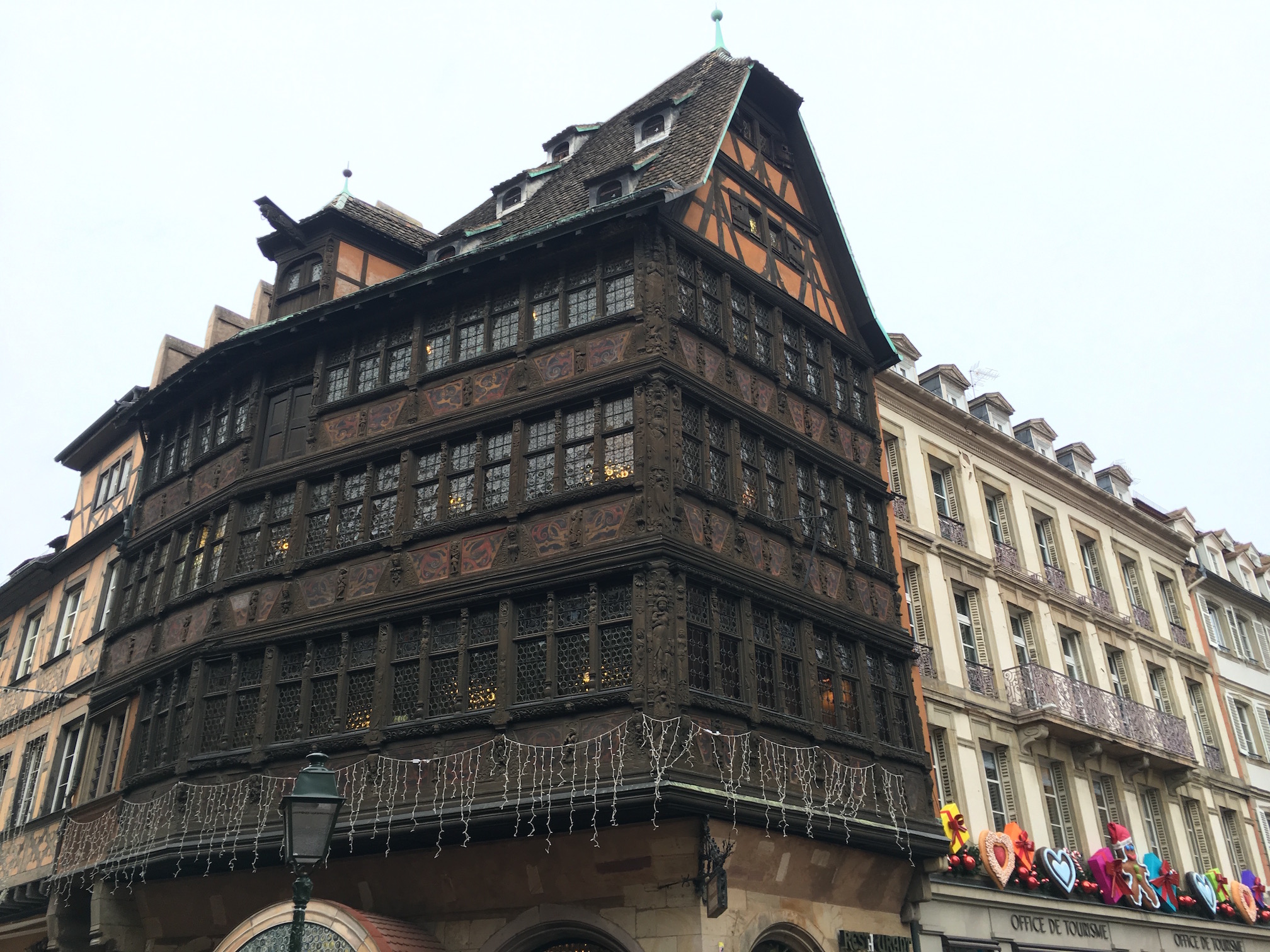
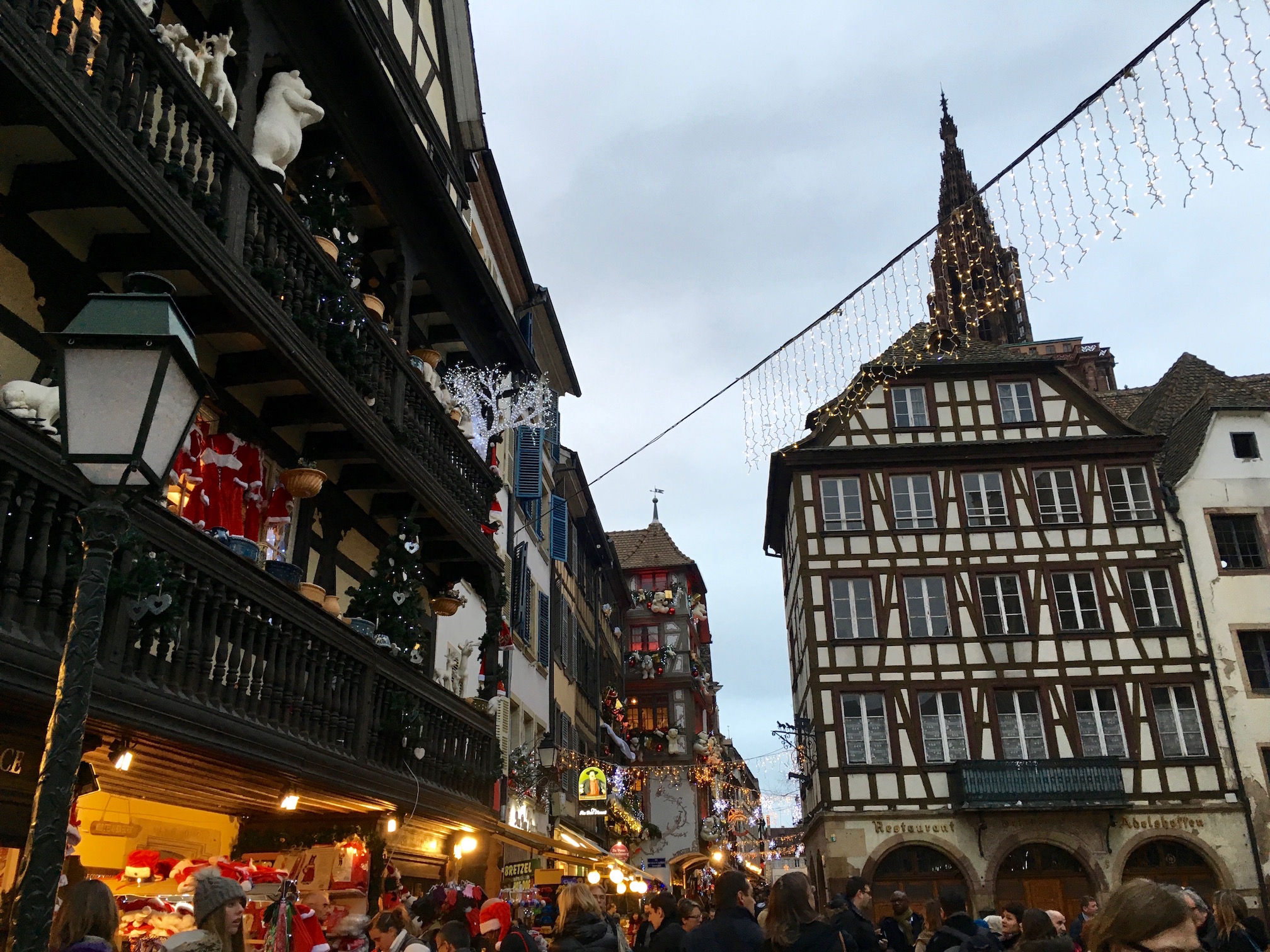


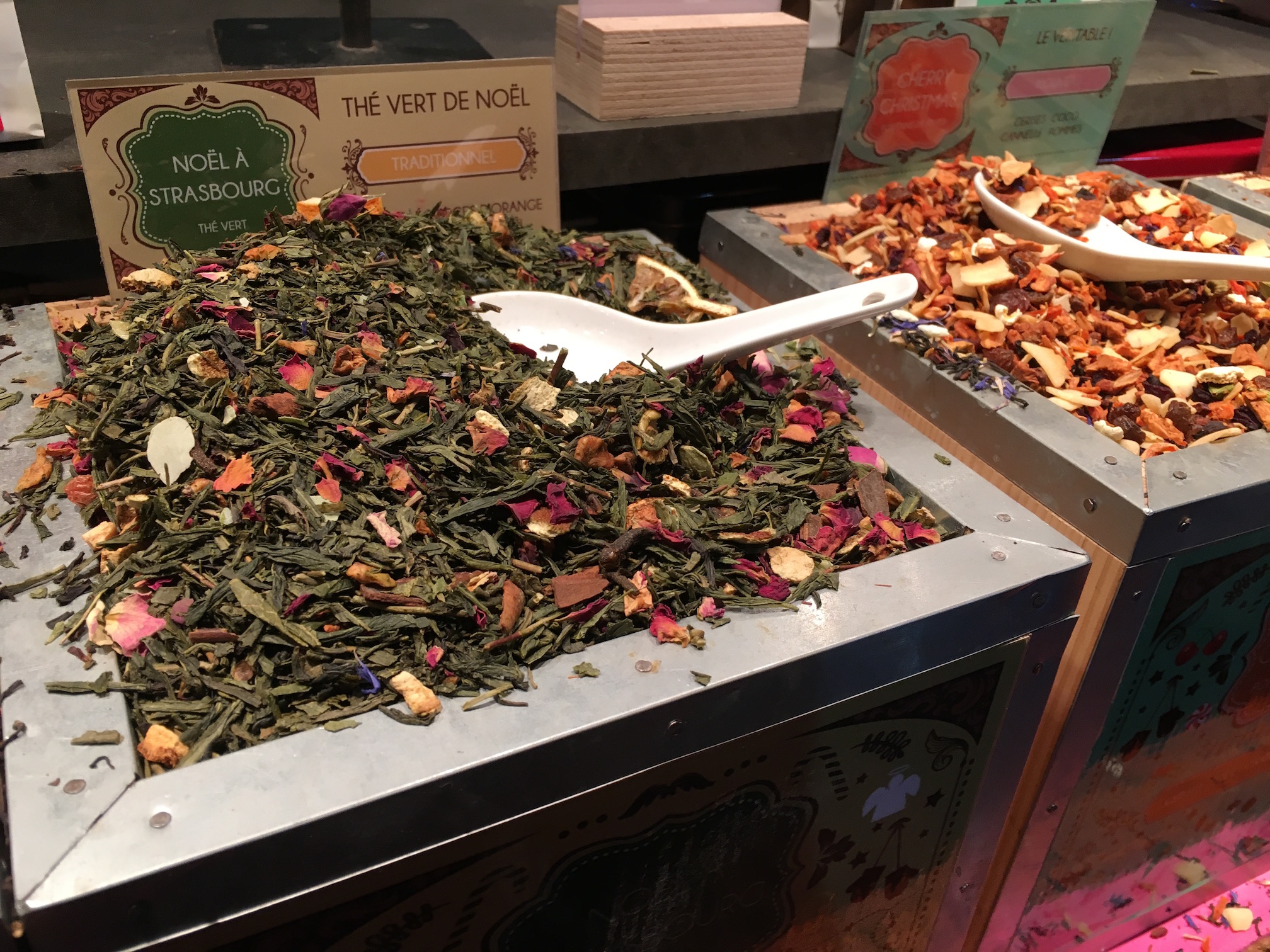
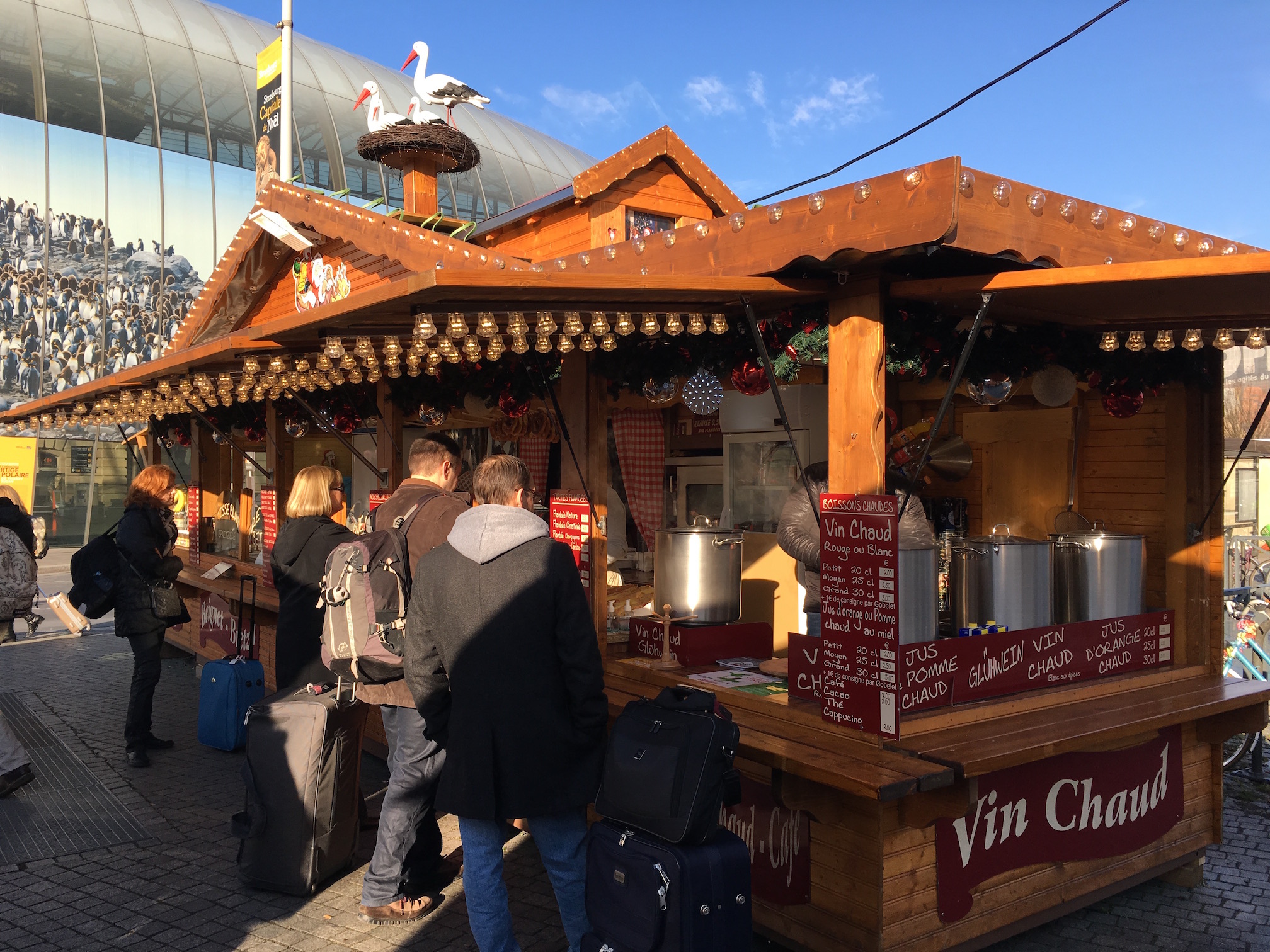



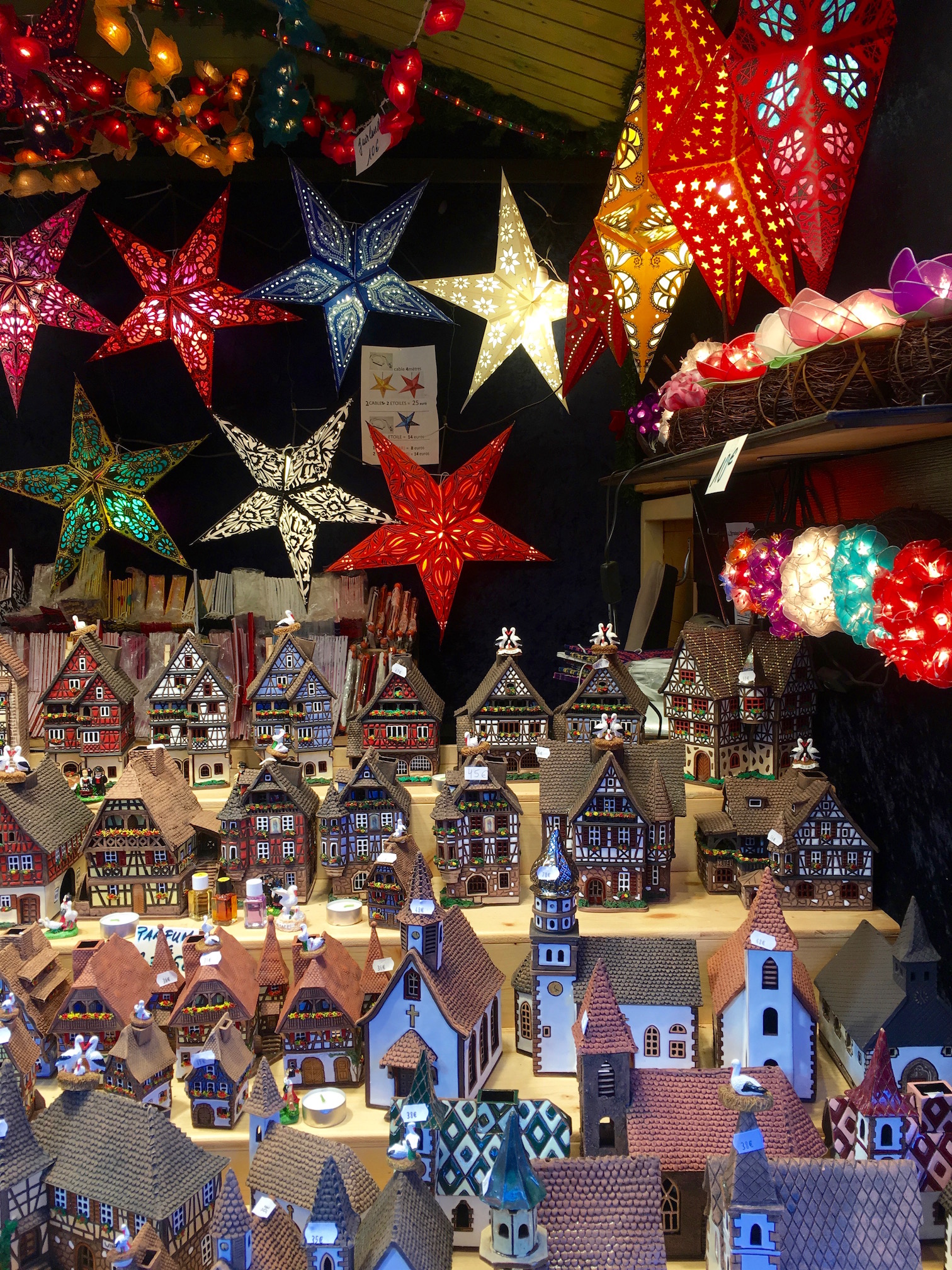

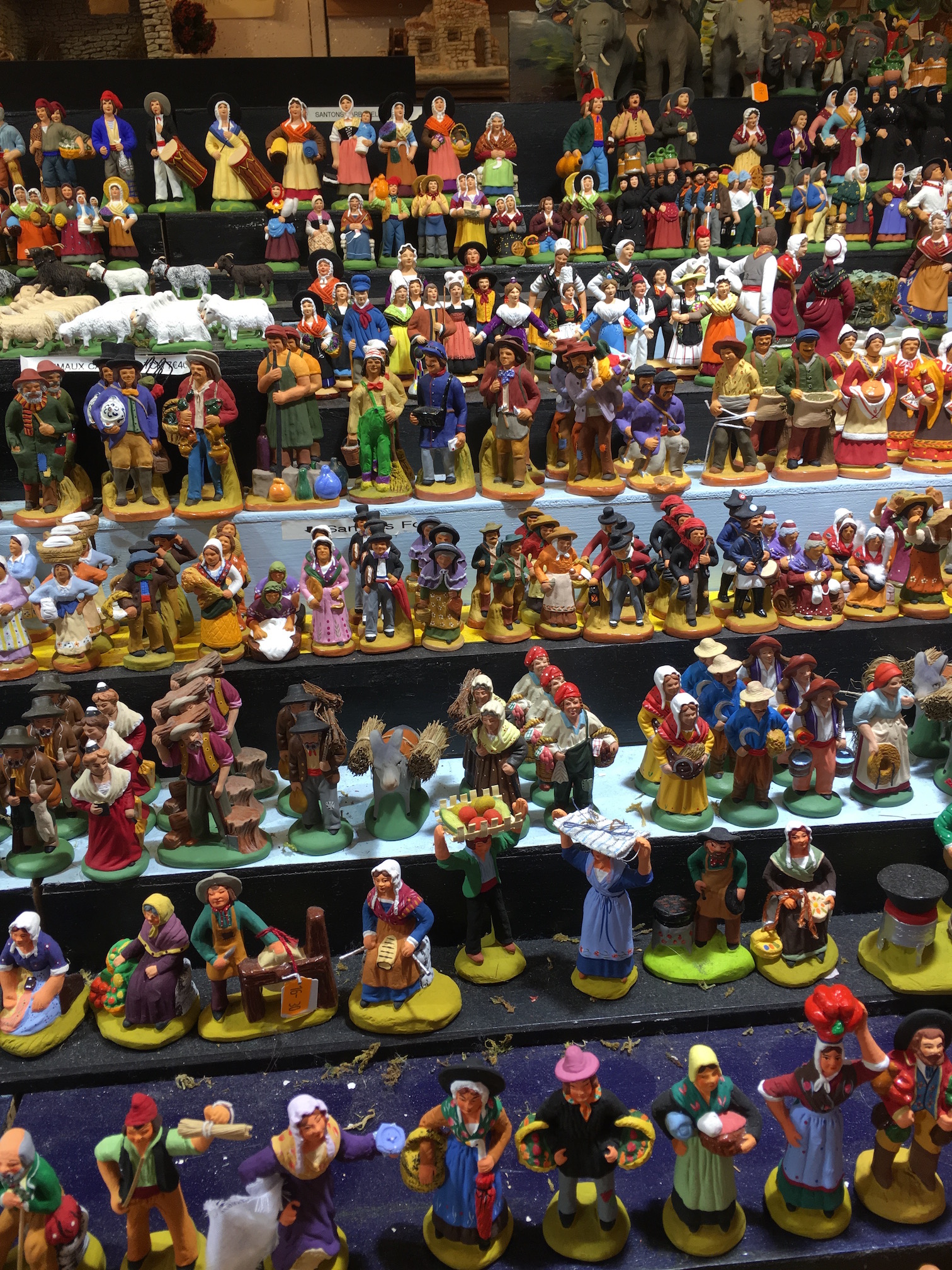
We booked our trip for two days thinking that we would need that long in order to see all the markets. However, we found that had we not stopped for a sit-down lunch on Wednesday, we could have just covered the markets in a day. I suppose it really depends on whether you've been to Strasbourg or not and how much time you want to spend seeing things other than the markets.
Market Food and Drink
The drink of choice at the markets is, of course, mulled wine. Unlike in Stuttgart's Glühwein, I found the vin chaud varied greatly from one stall to the next. Just around the Place de la Cathédrale, my mother had a rather sweet vin chaud while I had a very citrusy, tart one. The best vin chaud that we had was in Place Broglie where they brew it according to different recipes. I particularly liked the vin chaud grand-mère, which was a mixture of both white and red wine with spices. Note that Strasbourg doesn't use mugs like in Germany; instead you get a souvenir plastic cup that you can choose to keep or return for your 1€ deposit. While I didn't like them as much as the quaint German mugs, I must admit that they probably make more economic sense.
I found the market food to be very similar to that in Stuttgart, if somewhat more limited. The most common type of food were pretzels and sandwiches on half baguettes. They had many flavors including bacon and cheese, potato and cheese, salmon and potatoes, and a kind of baguette with "Knack", a popular Strasbourg sausage. Though I didn't try any, I also saw steaming vats of sausages and cabbage, a very German-inspired dish, as well as sliced potatoes cooked in creamy Münster cheese.
For dessert, we saw lots of stalls with chocolate-covered fruit and nuts, though they didn't seem to be as prolific as in Stuttgart's market. Rather, crêpes and gaufres (waffles) were all the rage with a number of toppings including jam, nutella, and whipped cream. Surprisingly, we also saw a fair number of beignets with various fillings.
Restaurant Recommendations
Ever since our first trip to Strasbourg, I always try to make it back to Chez Yvonne near the Cathedral. They have some of the best foie gras that I've ever had, and so it was a pleasure to take my mother there for lunch on Wednesday. We dined on Crème Brûlée au Foie Gras, Coq au Riesling, rack of Veal, and Boeuf Tartare. I can't recommend the foie gras crème brûlée enough. It's rich, creamy, and served warmed with a delicious fig bread. Yum!
I can also recommend Winstub Le Clou just across from Chez Yvonne. The interior is a little darker and a little less fancy, but they have some delicious German-French dishes, including an excellent Duck Confit Sauerkraut. On the same corner you'll also find Restaurant au sanglier, which makes some delicious Tarte Flambée (like the German Flammkuchen). And be sure to stop by Pâtissierie Naegel on the corner where they sell some of the most delicious pastries in the city.
Other Things To Do
It doesn't have to be Christmastime if you want to visit Strasbourg. The city is perfectly lovely on its own for a day trip or long weekend. In the past, we've enjoyed walking around Petite France, one of the oldest areas of the Grand Île with tiny winding streets and half-timbered houses. It's a great place to take picture-perfect postcards, even though the area was so named for the syphilis hospital that was built there in the late 15th century to cure patients with the "French disease".
I also recommend a visit to the Cathédrale Notre-Dame de Strasbourg (the Strasbourg Cathedral). Built in the 12-13th century, the cathedral is a stunning example of Gothic architecture with an imposing Romanesque interior. Be sure to visit the lovely astronomical clock inside that is supposed to be exteremly accurate.
For the first time on this trip, we also decided to take a trip around the Grand Île with Batorama's covered boats. The 70-minute tour was well worth our money; we got to listen to a commentary in English that detailed the city's history changing hands from France to Germany which helped to make up Strasbourg's unique culture. Another interesting point about the tour was that we experienced the city's locks firsthand, which I found to be fascinating feats of engineering.
When To Visit
While the Strasbourg market usually stays open until the new year, their hours have been unfortunately curtailed due to the recent events in Paris. The market's last day was on December 24th. While we were there we saw a lot of security, and several parts of the Christmas program had been cancelled. And so while it's too late to visit in 2015, the market will hopefully be up and running again at full steam in 2016.
I really do love Strasbourg and recommend a visit to the city at least once. That said, I think I prefer Stuttgart's Christmas market. It's more compact, the Glühwein is more predictably tasty, and the food is more varied. I am biased, of course, since my first foray into the Christmas market world was in Germany and so I think of Christmas markets as being German. That said, I'd be curious to hear what you think, too.
Did you go to the Strasbourg markets this year? What was your favorite part?
